How We Study Presidential Elections
in Our Homeschool
I’ve always made it a point to study the election process with my children. In college, I majored in Communications with a minor in Political Science, so you could say that “politics” is a constant, on-going conversation at our house.
I think it’s essential that the election process is both familiar and understood before the legal voting age of 18.
So here’s what we’ve done for past elections and, while the details might differ from year-to-year, one thing is always the same: my children ALWAYS study the Electoral College.
The Electoral College
Why study the Electoral College? Because our system of government is not a popularity contest. It’s a system that was intricately designed to balance equal voting among the states so that no one state or group of states would have an advantage over any other.
Many students might be surprised to learn that when a voter casts a ballot for president, they are actually voting for fellow Americans called “Electors.”
The electors, appointed by each state, are pledged to vote for the presidential candidate that the state’s voters have supported. That vote happens in the Electoral College.
The U.S. Constitution says:
“Each state shall appoint, in such manner as the legislature thereof may direct, a number of electors, equal to the whole number of senators and representatives to which the state may be entitled in the Congress.”
If you need more info, you can read more about the Electoral College here:
Here’s what we’ve done for previous elections:
How We've Studied Presidential Elections
Each year, my kiddos watch the election returns with me and fill out an Electoral College Tally Sheet. I created the tally sheet when they were only 4 and 8 years old so that they could easily participate on election night.
To get a copy of the Electoral College Tally Sheet for your students, see below.
Here’s what we’ve done for previous elections:
2012 Presidential Election
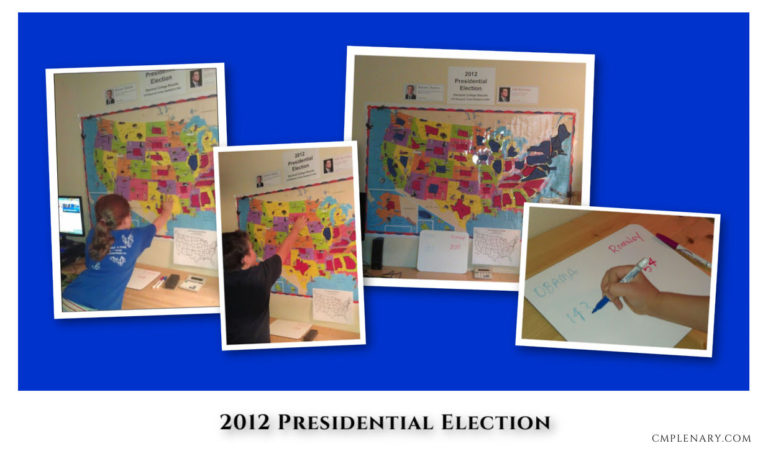
In 2012, my kiddos were fairly young – age 8 and age 4. I printed each state on red paper and blue paper (red for Republicans; blue for Democrats) and cut them out.
Then, as a state was called for a particular candidate, my kids taped the right color state to our map. We also kept a tally of the electoral votes for each candidate on a whiteboard.
2016 Presidential Election
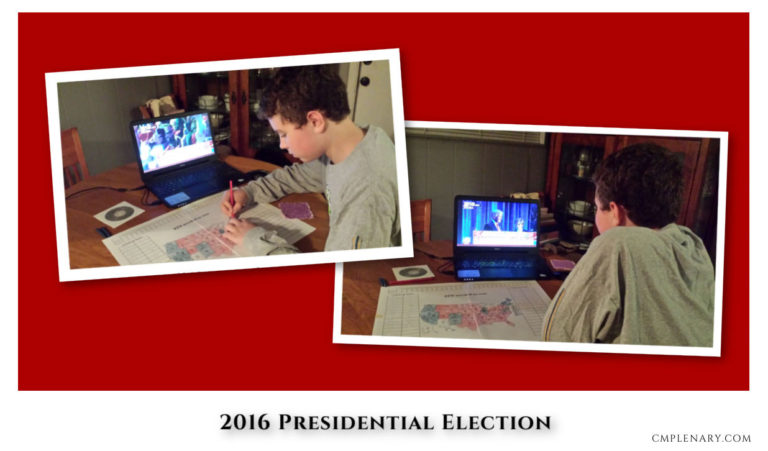
In 2016, I aimed for a more simple strategy. My kids (now 8 and 12 years old) simply colored in each state on a printed map, and we kept a tally on a separate piece of paper.
In these pictures, you can see my son watching the results. He and I stayed up (very) late to see who would win. My daughter got tired and went to bed!
Of course, prior to this election, we also started reading Plutarch when my son turned 11. Plutarch is under the subject of Citizenship in the Charlotte Mason method and begins in Upper Form 2 (grades 5 & 6). It really is the foundation of learning about citizenship, government, and character.
I always recommend starting with Plutarch’s Life of Publicola becasue it has some fascinating connections with our Founding Fathers, the American Revolution, and our Constitution (yes really, it does!). And I cover all those connections in the Plutarch Guide and Resources page I wrote for Publicola.
2020 Presidential Election
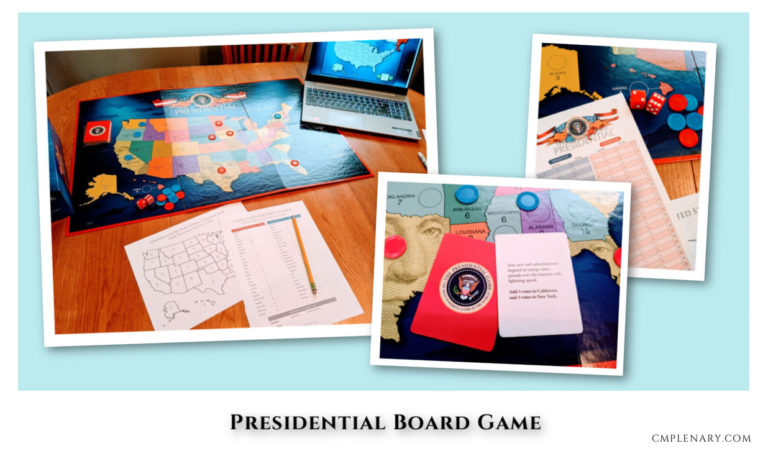
My kids are older now and can understand more of the election process, so for 2020, we have been diving in a bit deeper and having more conversations.
We also purchased a board game called The Presidential, which has been a lot of fun and has helped them learn more about how the Electoral College (and elections) work. It even has an online interactive map where you can assign states to a candidate and see how the electoral votes play out. Remember, a candidate needs 270 electoral votes to win the Presidency!
So this year, we will simply use the game board to keep track of which states get called for each candidate (but they can still color in each state on our printable map as well). And we will use the Electoral Tally Sheet and the interactive map to keep track of electoral votes.
To participate in the election process at your house, simply download the Electoral College Tally Sheet and Map below.
Just print it and watch the election results come in on election night, November 3, 2020. Then color each state either red or blue, depending on which candidate wins that state. And keep track of the electoral votes to see who gets to 270 first!
No matter which political party or candidiate wins on election night, your kids will learn and feel like they are part of the process. And that’s a win in my book!
Download your Electoral College Tally Sheet and Map now! It’s free and simple to use!
Electoral College Tally Sheet and Map - FREE PDF Download
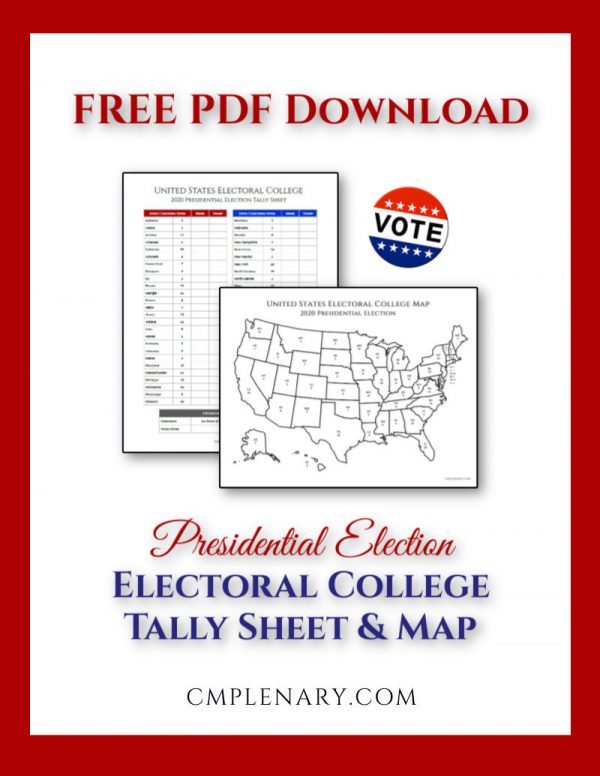
Let me know if you have any questions about using the Electoral College Tally Sheet and Map.
And have fun on election night!
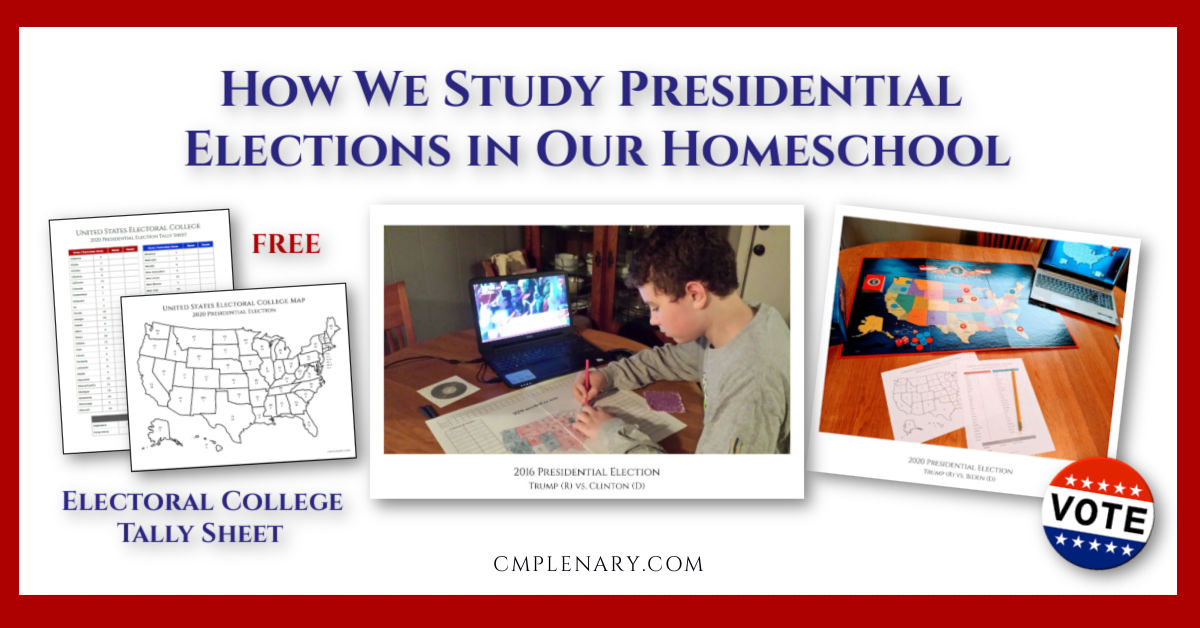
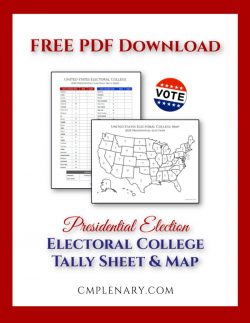
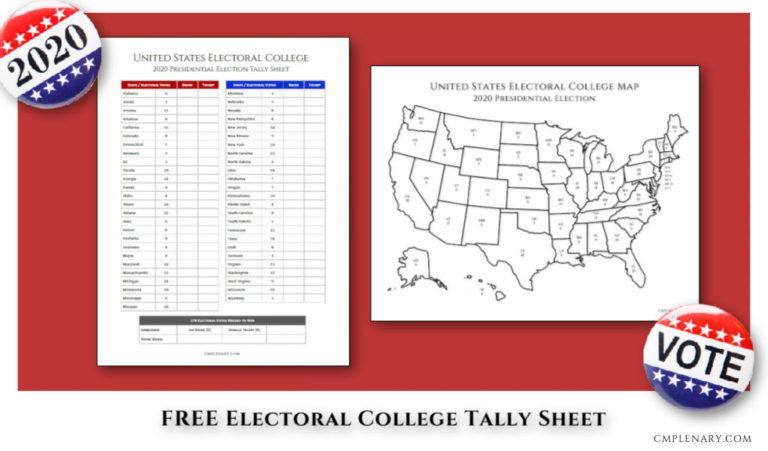
0 Comments for “Presidential Elections Study for Your Charlotte Mason Homeschool”